Geordie Malone
Leatherworker
Hide + Seeker
Photos by Max Mason-Hubers
How did you become a leathermaker?
I was in a local Newcastle band called Kira Puru & The Bruise and we spent a lot of time on tour and recording. Recording can be long and tedious and can lead to a lot of idle time which I’m not into. A friend told me a story about Josh Homme from Queens of the Stone Age filling in time in the studio by making wallets out of gaffer tape as there was a lot of it around.
I don’t even know if it’s true but I decided to give it a crack and enjoyed it.
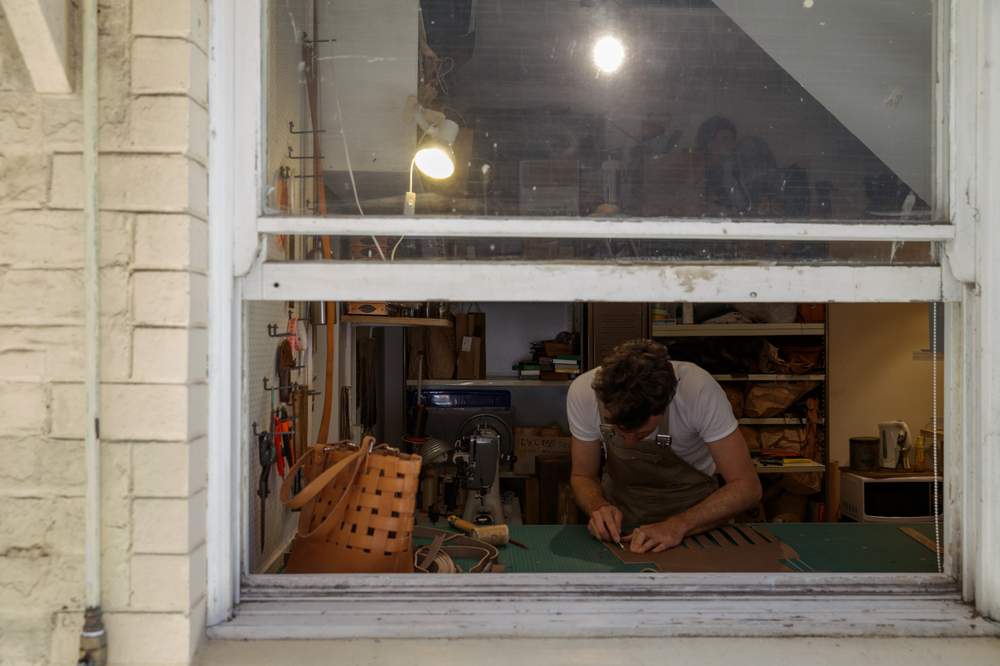
That got me thinking as I’d been searching for the perfect wallet for ages and couldn’t find it so I thought I’d try making one with leather. I have a friend who works with leather and he gave me some tips and I made a wallet that I loved.
It was a around that time that I had started seeing Eartha and wanted to impress her by making her her dream bag so I thought, why not have a crack at making a bag? And it all kind of flowed from there.
The other thing I was doing at the time was studying cabinet making at Tighes Hill TAFE as well as doing the odd job in carpentry for people.
My two teachers at TAFE both worked as Grand Piano makers as their real job. I remember one day asking Grant, one of my teachers, 'How do you make Grand Pianos?' He told me that it wasn't at all about knowing how to make Grand Pianos.
It’s the skill of being able to take a detailed drawing and turn it into a real thing. Whether that thing is a coffee table or a Grand Piano. And therefore if you were able to turn an idea into a drawing, you should be able to make anything.
So this is how I first approached leatherwork. As long as I could imagine what I wanted to make I could then draw it. And if I could read the drawing properly and understand how to use the tools then I could make whatever I wanted.
I still use this technique everyday when doing custom orders for people, especially obscure ones.

How easy is it to work with leather and how much training is required?
For me, to initially start working with leather it was quite easy. I started off trying to make simple projects and progressed by trying to make the next most difficult thing. It was quite an organic process.
I also believe the experience of making things in any material is really valuable when you want to learn how to make things in a new material. Just as musicians find it easy to pick up a new instrument, my previous experience in carpentry helped in learning leatherwork.
It is also a surprisingly physical trade, probably most taxing on my hands. I’m used to it now, but initially I remember always having sore fingers and hands.

What's the best and worst bit of your craft?
The best bit of my trade is my constant ability to be creative through the process. For me there is no right or wrong way to do things. I'm constantly creating new ways to do things and new things to make. I also often have to make my own tools as a lot of the tools required are just not available. This is awesome as I can invent tools and ways of doing things that suits me perfectly, but this also brings me to one of the worst bits of my craft. That being that as there are not many of us doing the trade there is a big lack in tools and resources for the job.
What's the most unusual item you've made and why?
A few years ago, just after we opened our shop on Beaumont Street, a young guy from Estonia came into the shop with an amazing looking bicycle. He was an industrial designer and blacksmith and he had made the bike himself on a farm that he was volunteering on. He had designed the bike to house a leather bag. He himself was not a leatherworker, but he knew eventually he would come across one who would be interested in working with him to create the exact bag he had envisioned. So as he rode his bike past our shop he slammed his brakes on as he saw my leather bags in the window and it turned out I was that guy he had been looking for.
We then went on to design and create one of the most interesting bags I've ever made. The bag looked like a regular messenger style bag, except that it was asymmetrical on every axis as to suit the shape of the bike frame. There were also new requirements for the bag that I had not at that point ever considered in design. For example the relationship between the angle of the flap and how it would affect both the aesthetic and speed of the bike. What we came up with in the end was amazing. His bike in itself was a work of art and the bag I made for it really complimented that. Working with him was a really enjoyable experience as we are both perfectionists and he is as full on about attention to detail as I am. I think we both learnt from each other and I love that kind of collaboration.
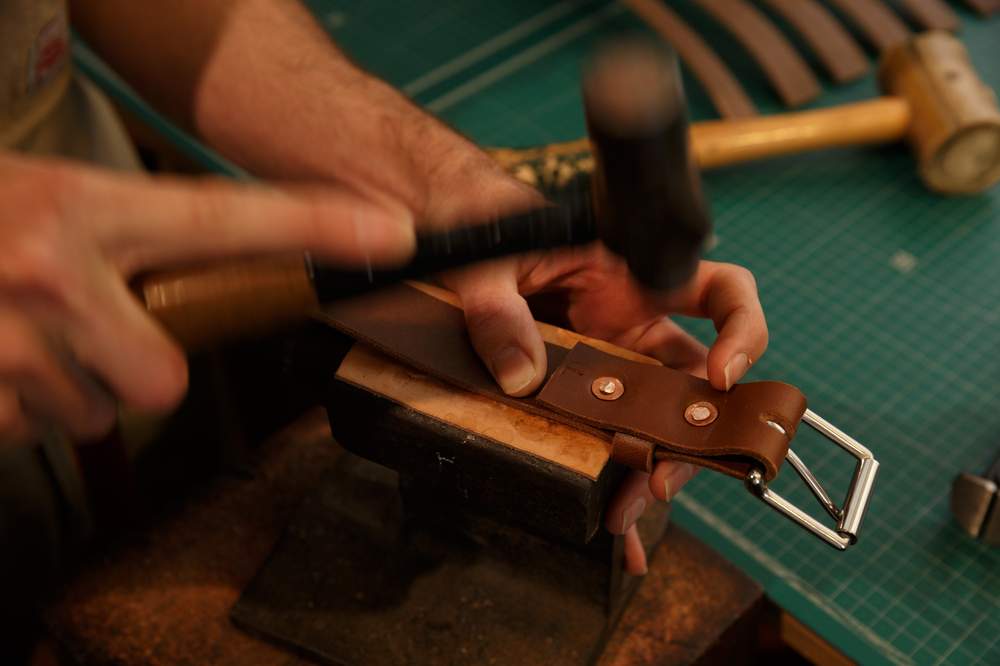
In your wildest dreams, what would you desire for your business?
I love working in a team. So eventually I would like my business to grow to a stage where I can work alongside some other awesome people. That’s just how I like to work. I also really like the idea of being able to employ people. I love my work and I would love to be in a position to pay other people to do something really enjoyable like leatherwork.
I would love to have more control over the choice of hardware and materials available to me. Designing and making my own buckle and hardware range is something I think about a lot.
I would also love to work overseas with other leather workers. Being able to combine travel with more longer term collaborations with other designers and artists would be amazing.
What I'm trying to avoid with my business growing is taking on more of a managerial role. What I love to do is make things, so I'm not going to stop being the maker no matter how much I grow.
Kelly Lees
Beekeeper
Urban Hum
Photos by Marina Neil
How did you get interested, dare we say obsessed, with bees?
It really started because we were not getting good pollination in our Vege garden. If you have ever tried to hand pollinate zucchinis and pumpkins you will know that humans are not very good at it.
So [my partner] Anna and I did a one-day beekeeping course. Being a serious nerd about the natural world, bees really appealed to me. So we got a beehive, and that one beehive turned into two hives and before long we had Urban Hum.
I now do a lot of reading and research and keeping of bees. They completely captivate me, every time I open a hive I am fascinated and learn something new.
Bees are the most studied insect in the world and still, we don't know everything about them.
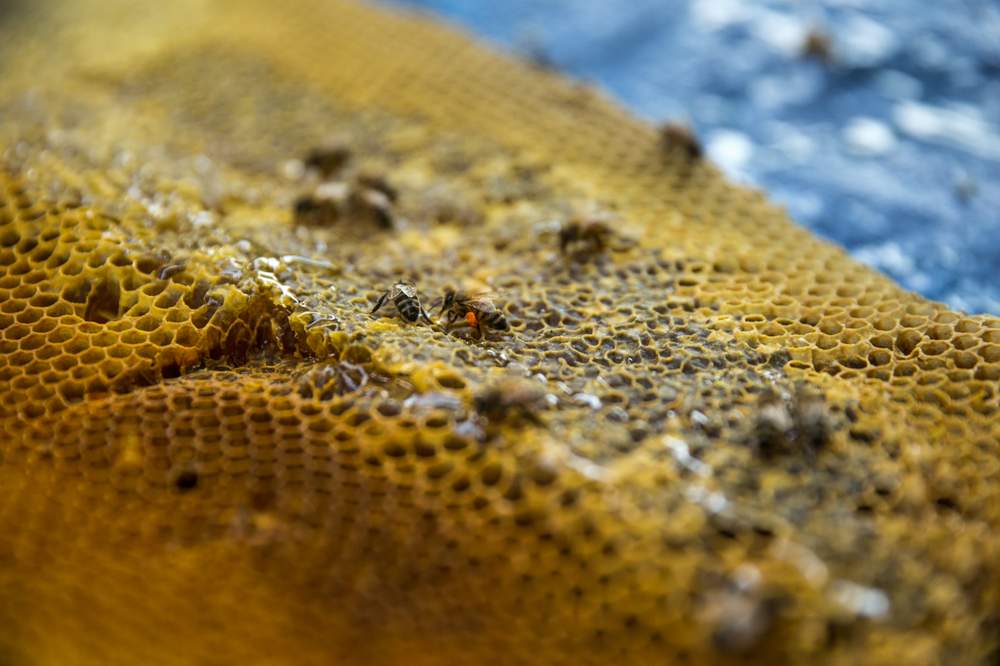
Why did you decide to create Urban Hum, your community bee-keeping operation?
Urban beekeeping had been going through a renaissance around the world. Rooftop beekeeping in Paris and London was really taking off and it had started in Melbourne and Brisbane.
Having both come from families that had created self-employment opportunities over the years we were not worried about making the leap.
As a casual school teacher, I was not guaranteed work all the time so Urban Hum came into being.
Having people who were interested in having bees in their yard without the hard work seemed like the best way to go, and the idea was really well embraced in the Hunter.
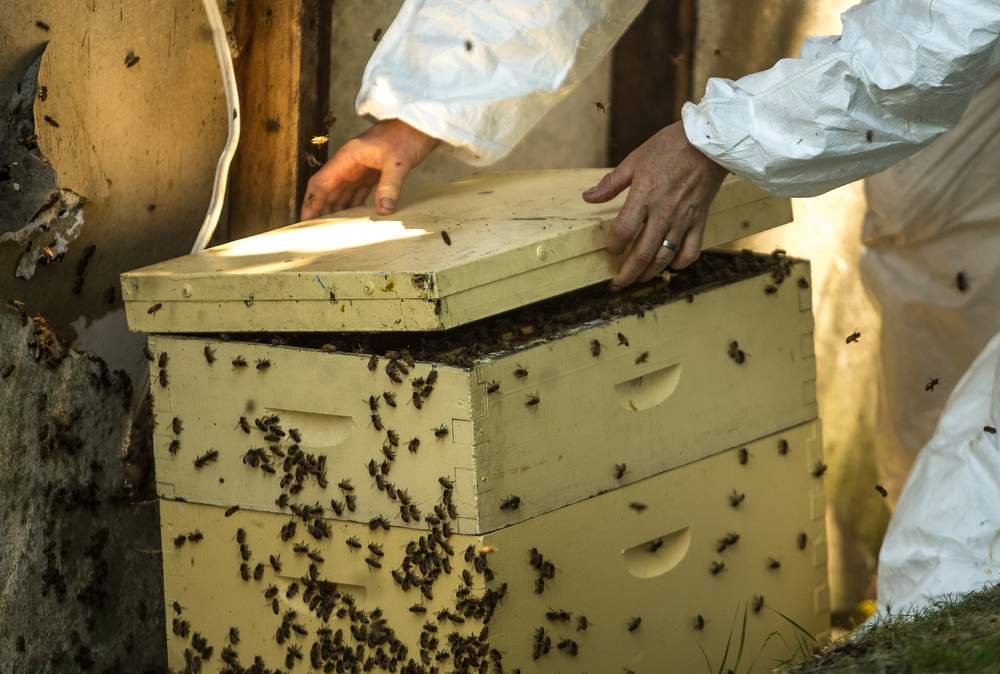
How many people have sought your help to host a beehive in their backyard and how do you assist as far as maintaining the hives and giving them honey?
We currently have around 100 hives in 26 different suburbs around Newcastle. Most of these are single hives in just one person's backyard, balcony or rooftop.
We have 5 hives out at Maitland on the roof of The Bikesmith Espresso and we also have a teaching apiary at Mayfield with 5 hives and a rural satellite apiary at Macquaridale Organic Wines with 9 hives.
Basically, the hives belong to Urban Hum, we take care of the bees, hive and honey extraction. Hosts pay a small fee and receive between 2-4kg of honey annually.
We have quite a long waiting list now for hosting in excess of 100 people and we are now starting to focus on commercial sites where we can place multiple hives in one location.
We like to encourage people who are interested in bees to perhaps think about getting a hive of their own and we now have one-day beekeeping courses that can get them started.
We do also offer mentoring and assistance if new beekeepers want help and we do get lots of emails and phone calls.
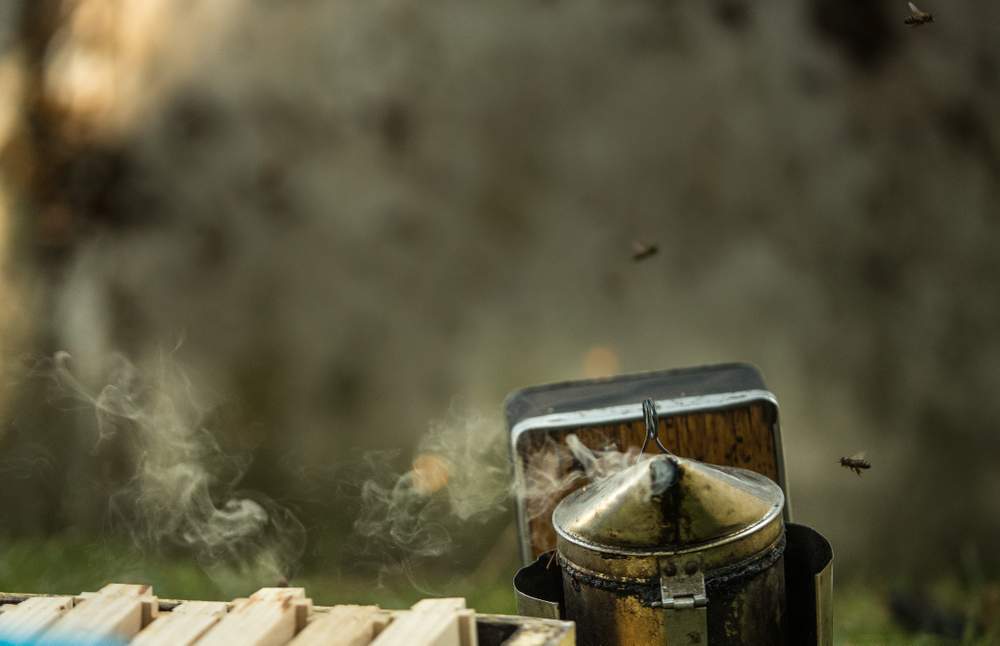
How many hives have you got going at any one time and what does your average day entail?
So we have 115 hives currently. The numbers do fluctuate slightly, sometimes you lose a colony or in Spring and Summer, you get new ones.
My days are very variable, there is not really an average day, depending on the weather and what outside jobs I have like bee removals. Some days I will do hive inspections depending, on what I find at each hive I may get through 3-6 hives in a day.
I also have to build and paint all the hives and build, wire and wax the frames for the inside of the hive.
Sometimes I need to do maintenance on existing hive equipment and of course, I have extraction days where I work at extracting and bottling all the honey.
Finally, I do bee removals, so cut outs from walls and chimneys and removals from all sorts of places, this kind of work is very varied and you never know what you will find until you start.
As much as anything, what I do is dictated by the weather. It really is farming, I can't open hives in the rain, wind or high heat so those days become days for other jobs.
Sometimes you make a plan and the weather and the bees have other ideas.
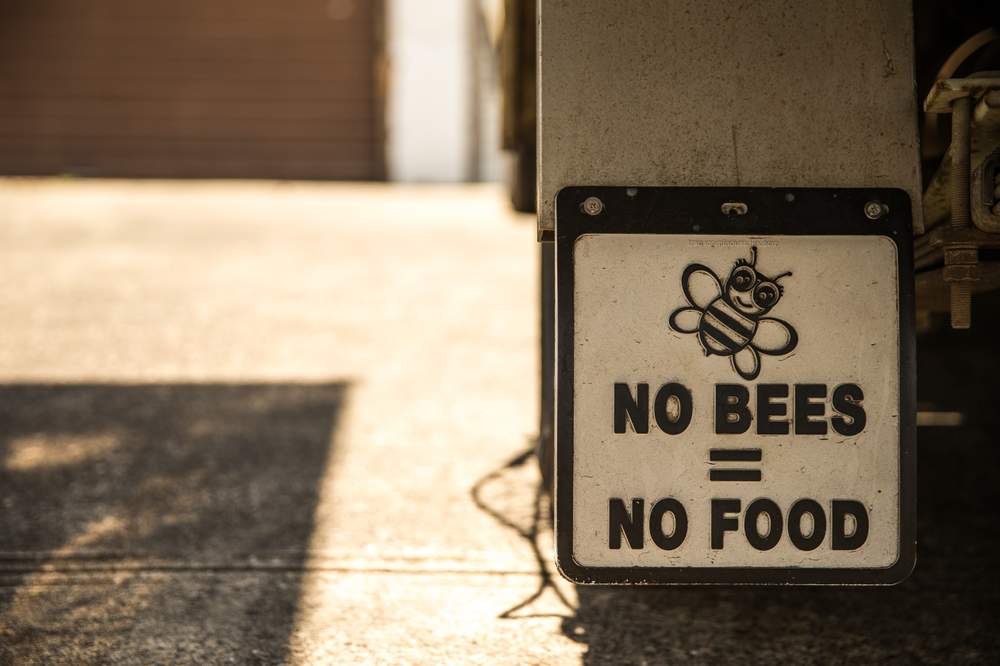
Einstein reportedly said if bees vanish from the earth that mankind won't have more than four years to live. True?
It is certainly true that we would have significantly less food choices. Bees are responsible for the pollination of around 1/3 of the food we eat.
In Australia, 65% of our Agricultural industry is dependent on Honeybees with 35 specific industries mostly reliant on bees for their production. I think what people possibly don't think about with the disappearance of bees is not just the loss of the bees but the flow on effects that may have.
Whenever you lose an important species the consequences for an ecosystem can be catastrophic. We do have to think of human agriculture as an ecosystem and the removal of bees from that system has unknown consequences for human survival and health.
Mankind disappear? maybe not but struggle almost certainly.
What fuels your fascination for the bee over other insect or beast?
I just find them entrancing. They are incredibly beautiful in so many ways. The way they fly, they are actually a bit clumsy if you film them then slow it down you see them bump into each other and crash and tumble and this to me makes them even more attractive.
They should not be able to fly, they are so heavy, but they do. I love the way they zoom about with such purpose. There are things they do that we still don't understand.
One of my favourites is called Washboarding, they line up on the outside of the hive and move their front legs and antennae backwards and forwards in a rhythmic motion across the surface of the hive, like a dance, simply mesmerising.
Why do they do it? No one knows. It's this unknown that keeps me drawn in.
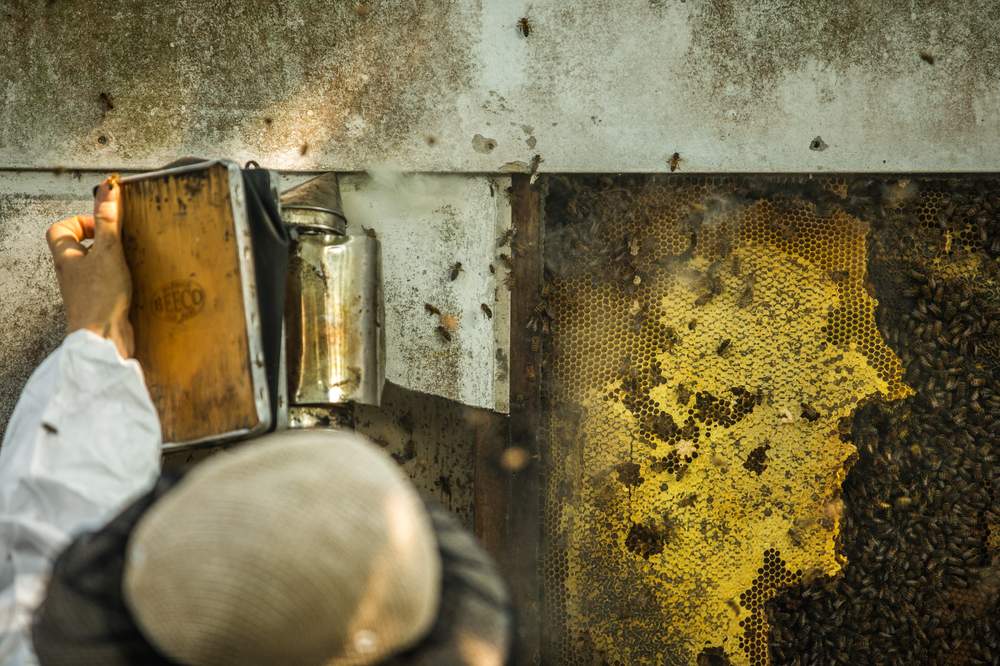
I am endlessly curious about the natural world and get easily obsessed, with insects especially. A childhood spent with a bug catcher, butterfly net and identification books never really went away.
I once had a pet Praying Mantis called Killer who I hand-fed caterpillars to, that says it all really.
What is the thing you love most about your work?
The varying nature of it. So many different jobs in one job. I get to work outdoors, build things, talk to people at the markets, teach people about bees and spend time alone just me and the bees. It does not get any better than that.
Will Maguire
Blacksmith
Photos by Perry Duffin
How did you get into blacksmithing? What was your path to where you are now?
I got into it while still at school before doing an apprenticeship with industrial blacksmiths Forgemasters in Kurri Kurri.
It wasn’t until I travelled overseas as a journeyman blacksmith to work with many different smiths from England, Russia, Japan and the USA that I started seeing the potential to combine contemporary design with traditional blacksmithing techniques.
In 2009, on my return to Australia, I started out in my own here in the Hunter Valley making contemporary ironwork.
How do you carve a living out of this trade? What is the role of a blacksmith like yourself in the modern era?
Most people have wildly varying preconceptions of blacksmithing most of which are downright entertaining.
For me I see forging steel as a wonderful technique for working metal with huge unrealised potential to couple with contemporary design for use in architectural ironwork, public art, sculpture as well as supremely functional items such as tables, chairs and lighting.
This is where I see the relevance of the blacksmith in the modern era.

How did you get into blacksmithing? What was your path to where you are now?
I got into it while still at school before doing an apprenticeship with industrial blacksmiths Forgemasters in Kurri Kurri.
It wasn’t until I travelled overseas as a journeyman blacksmith to work with many different smiths from England, Russia, Japan and the USA that I started seeing the potential to combine contemporary design with traditional blacksmithing techniques.
In 2009, on my return to Australia, I started out in my own here in the Hunter Valley making contemporary ironwork.
How do you carve a living out of this trade? What is the role of a blacksmith like yourself in the modern era?
Most people have wildly varying preconceptions of blacksmithing most of which are downright entertaining.
For me I see forging steel as a wonderful technique for working metal with huge unrealised potential to couple with contemporary design for use in architectural ironwork, public art, sculpture as well as supremely functional items such as tables, chairs and lighting.
This is where I see the relevance of the blacksmith in the modern era.
What are some of the highlights of your career? Where has it taken you? What things have you made that stand out?
It has been such an interesting journey so far. There is a global network of smiths which is so open and welcoming and such a pleasure to be part of.
In recent years I have had work in Sculpture by the Sea in Bondi and completed a big memorial in Newcastle for all the Steelworkers who died at the Steelworks during last century.
Most recently I was invited as one of 25 international master smiths to design a panel for a WW1 peace memorial in Ypres Belgium.
It culminated in September last year in a huge public forging event in the main square of Ypres with hundreds of blacksmiths from literally all over the world making individual panels to surround a 12 tonne peace memorial.

Why do you do it? Why do you love it?
I am not sure, I think it is the broad opportunity for creativity resulting in permanency. I do love the process, yes it can be hot and heavy work, but there is something about being able to move steel like play dough then have it cool down in a new form and become this ridiculously hard material once again.
What are the challenges you face, what are the highs and lows of blacksmithing?
Right now, 43 degree days are a significant challenge. As with a lot of small business managing workloads and cash flow are constant issues but I can’t complain. If I am able to design and make items that I enjoy making and bring joy to their owners as well, what more can I ask?

What is your plan for the future as a blacksmith? What lies ahead?
For me sculpture has become a constant and intriguing challenge, I have an exhibition of new work opening at Traffic Jam Galleries, Sydney, in March which I am working on right now.
As for the future there are some interesting things in the pipeline and contemporary blacksmithing ready is in its infancy.
Here in Australia, we have a long way to go.
Scott Westcott
Commonwealth Games & Olympian runner
Photos by Jonathan Carroll
You and your three siblings grew up running amok on a sheep farm in Parkes. Is that where your love of athletics was nurtured?
Running was a self discovery journey for me from the age of 9 or 10. I loved the fact that I had found an activity I was good at. This had a dramatic affect on me as I was looking for my place in the world.
Our family farm, 'Glenbrook' was the perfect setting to explore and develop my talent. There were no coaches or training buddies, just my watch and I. My siblings all tried their hand at it at various times so I had company on occasion and my parents would take me to wherever the opportunities were.
They never forced me to run, it was a choice which was as much about identity as it was about anything else.
You were a high school teacher for 11 years. When did you start competing in marathons?
I started my first job in schools at Maitland Christian School in 1998. during that time I had some big breakthroughs in shorter distances from 1500m to 10km races.
I kept honing my ability at these shorter distances until I was 28, when I stepped onto the line of the famous Fukuoka Marathon in Japan - this was my debut.
Since 2003 I have run 16 marathons in all including two World Championships, one Commonwealth Games and one Olympic marathon.
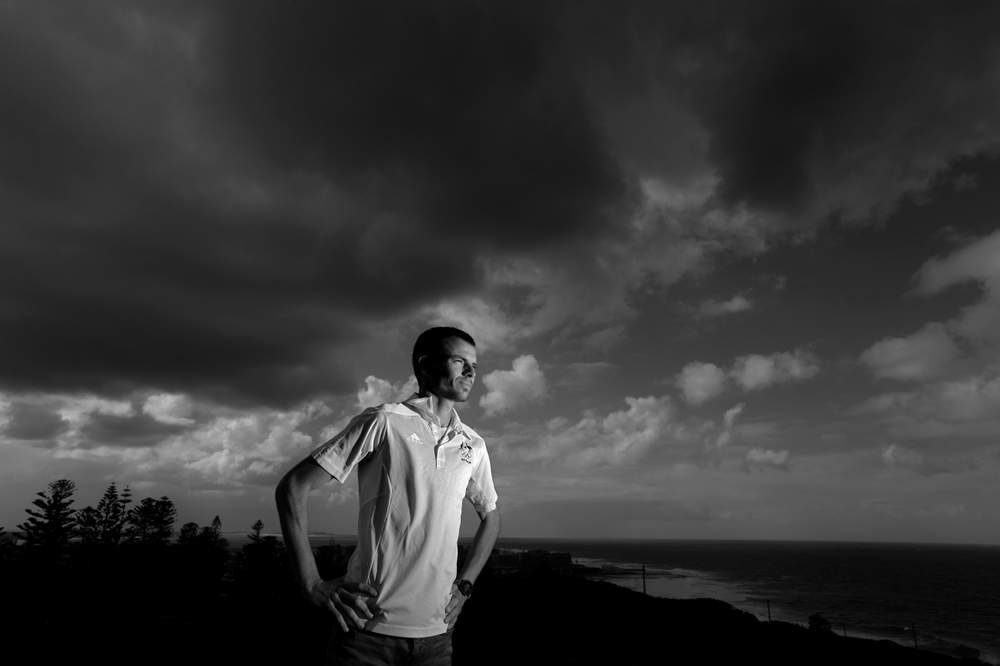
Has it been tough juggling work, training and being a father to three young children?
Yes! The last eight years have been fast paced with my running always there in the background or foreground. Our first child Noah was born in June 2008 which was after my failed attempt to make the Beijing Olympics.
At the time I thought this was my only chance and my disappointment immense as I believed I was harshly treated not to have been selected.
This disappointment was dissolved last year as Noah, then 8, rode my journey with me, became a 'rock star' at school (for a short time!) and I believe has been positively impacted by watching me achieve my goal.
In your 25 years of training, you have done 16 marathons, including fourth place at the Commonwealth Games. Had you given up on competing at the Olympics when you were, in fact, selected when you were almost 41?
My mind struggled for years to retire and to give away high level athletics. I remember making an announcement in 2013 before the Melbourne Marathon claiming this was 'definitely' going to be my last. Unfortunately I ran 2:14.23 and was closing down on Liam Adams who ultimately took the third spot to the 2014 Glasgow Commonwealth Games (and ran very well).
This kept me a little bit interested so that the following March I was invited to run in Nagano Japan where I had my first international win and beat Japanese legend Yuki Kawaichi. This happened just six months into my retirement!
The Berlin marathon is always close to or on my birthday so I had lined it up a long way out that if given the choice, I would love to have a go as a 'newly ordained' Masters (+40yrs) athlete.
This was my focus with Steve Moneghetti's masters record of 2:17 as the target.
I was ultimately very happy to beat it by 90 seconds but even happier that it was a performance that met the qualifying standard for Rio.

What will you remember most from Rio?
Finishing! It was a feeling so longed for and such a long time coming. I think in those few seconds where I crossed the line three decades of yearning was realised.
This was my journey, it was what I had set out to achieve and although it may seem a little crazy some small part of me always believed I would achieve it.
Finishing my marathon in Rio was finishing my journey.




